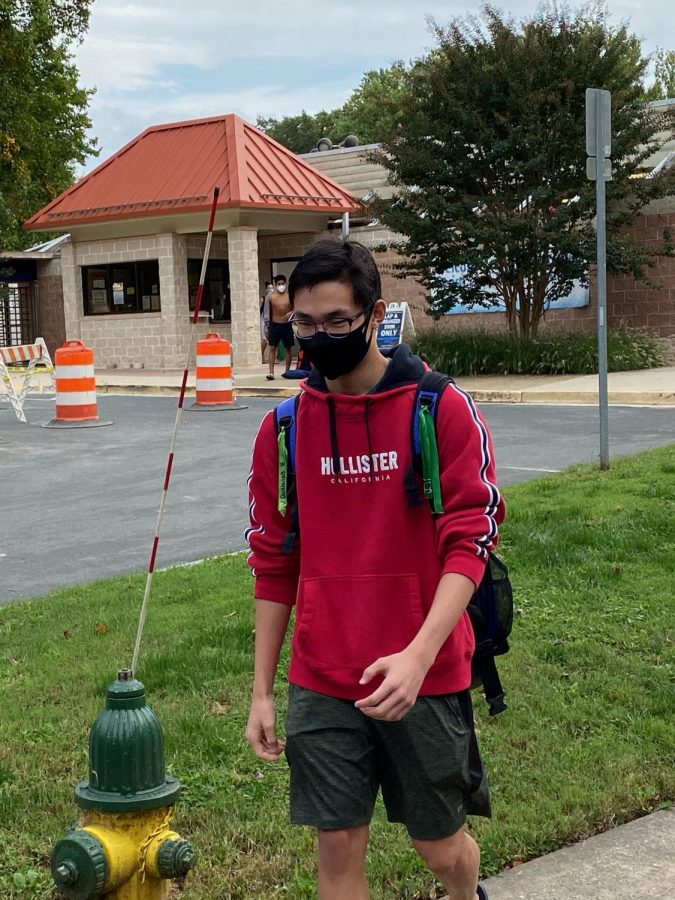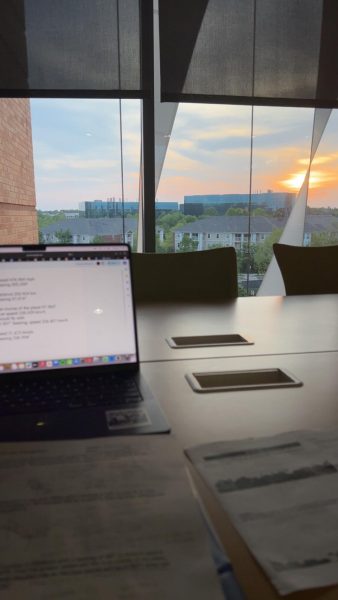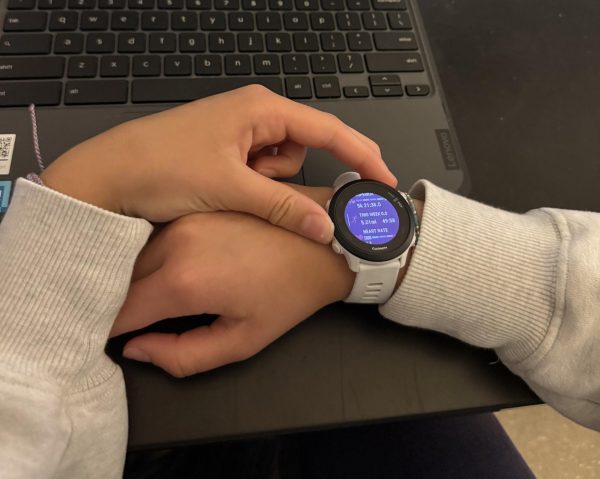Coronavirus: When will we go back to normal?
Senior Joseph Yi leaves swim practice from Rockville pool, which reopened in August with service restrictions in place.
On March 12, the state superintendent issued an order for all public schools in the state to close for two weeks in response to the growing COVID-19 pandemic. While students were excited about the prospect of an extended spring break, what they didn’t know was that they wouldn’t be going back.
After six months of staying home, socially distancing and wearing masks, people have become restless. Many grocery stores, sports complexes, swimming pools and libraries have reopened, taking into account CDC guidelines such as social distancing, proper hygiene and mask wearing. Unfortunately, the desire to rush back to normal life through reopening businesses without following guidelines and hosting large gatherings will only push us further away from the normalcy we’re looking for. “Even though restaurants and stores are reopening, a lot of people are taking it as a sign that everything has returned to normal which isn’t true at all. The COVID-19 virus still exists and if we don’t continue to take it seriously it could go back to how worse it was a few months ago,” senior Janani Ilangovan said.
Amidst the hope for returning to normalcy, countries and research companies have been working on vaccinations, with some already far along the development process.
Vaccines typically require years of research and testing before they can be released into the market. However, in an interview with US News, Dr. Anthony Fauci, the head of the National Institute of Allergy and Infectious Diseases, said that it is important for the US to move quickly with scientific developments, but safety must also be considered. In regards to a vaccine, Fauci said he was “cautiously optimistic” that a vaccine will be approved by the end of 2020 or early 2021.
The vaccine development process is lengthy. New York Times reporters Jonathan Corum, Sui-Lee Wee and Carl Zimmer state that scientists start with preclinical testing – or trying the vaccine on cells and animals to see if there is an immune reaction. Then begins phase one, where scientists distribute the vaccine to a small number of people to test for safety and immune responses. Once phase one is passed, companies move to phase two and give the vaccine to hundreds of people split into groups by age and other traits to see if there are different reactions. For phase three, the vaccine will be mass distributed to thousands of people while also giving a placebo to other volunteers to compare the effectiveness. After passing each phase, the vaccine is ready for approval and can potentially be licensed.
Along with other countries such as the United Arab Emirates, the National Institutes of Health say that they have already begun phase three of their COVID-19 vaccine. Developed by the Moderna, Inc. biotech company in Cambridge, Massachusetts, the mRNA-1273 vaccine candidate has 25,296 participants enrolled in their phase three study as of Sept. 16, with 10,025 participants having already received their second vaccination.
Although science is progressing rapidly, it’s important for us to continue to socially distance and wear masks until the vaccine is approved for distribution. Even with an approved vaccine, it’s not confirmed that it’ll provide immunization for all who are vaccinated. In the Food and Drug Administration’s guideline for the approval process of COVID-19 virus vaccines, it is stated that the product must only be 50 percent more effective than a placebo. While 50 percent seems low, in an interview in NPR, Dr. William Miller of the Ohio State University College of Public Health said that the vaccine could possibly reduce the severity of the disease in the other 50 percent who are not immune. This would result in less hospitalization and medical treatment.
While a higher efficacy rate is preferable, such as a 70 percent benchmark rate stated by the World Health Organization, increasing the minimum percentage while still requiring a vaccine to be released in the same timeframe is not realistic.
We may never completely return to how we were before this pandemic, but retaining good social health practices and hygiene will keep us all more healthy, even if there isn’t a virus going around.
Your donation will support the student journalists of Thomas S. Wootton High School. Your contribution will allow us to purchase equipment and cover our annual website hosting costs.
Christina Liu is a 2021 graduate.







